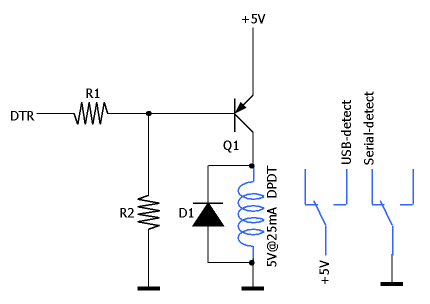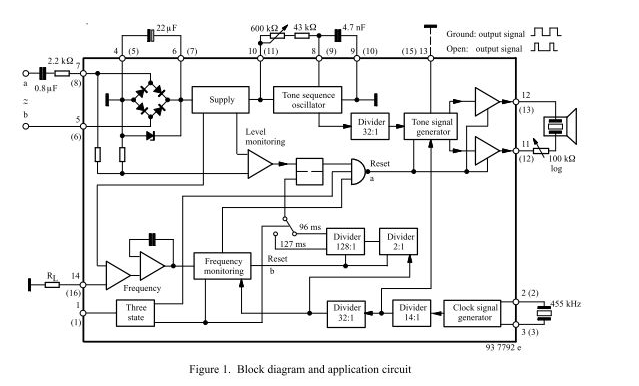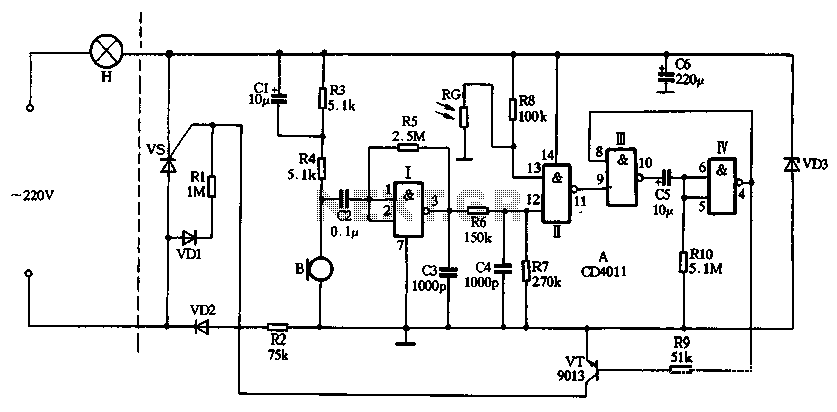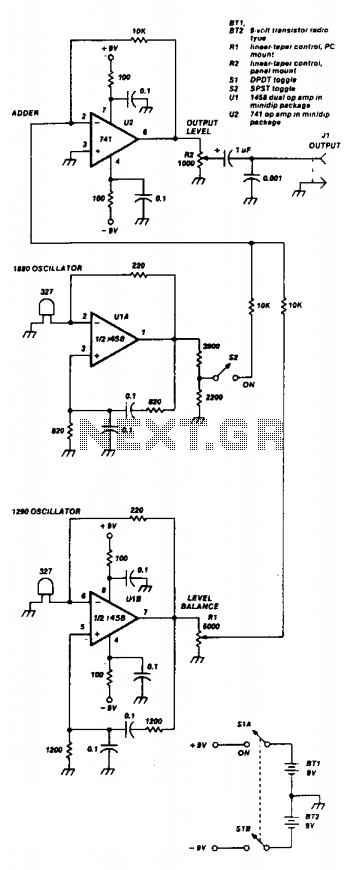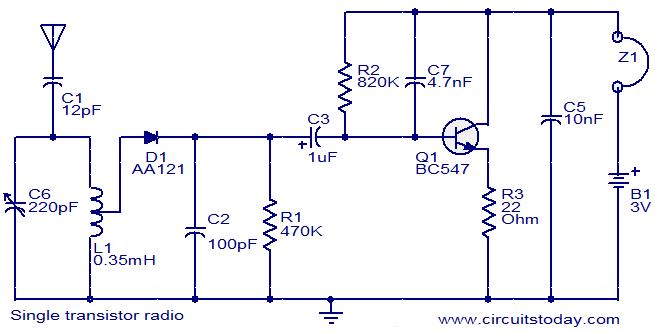
Dual Tone Single IC Siren
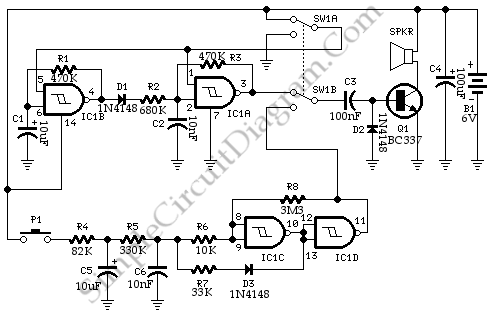
This circuit generates a double tone police sound and a single tone old ambulance sound. It is typically installed in battery-powered cars and motorcycles.
The circuit utilizes a sound generator IC, such as the 555 timer or a dedicated sound synthesis chip, to produce the desired audio frequencies. The double tone police sound is achieved by generating two distinct frequencies that alternate rapidly, creating a siren effect. For the ambulance sound, a single frequency is produced, simulating the traditional sound associated with emergency vehicles.
To implement this circuit, a power supply, typically a 9V battery, is connected to the sound generator. The output from the IC is fed into a small speaker or piezo buzzer, which amplifies the sound for better audibility. Additional components such as resistors and capacitors are used to set the frequency and tone of the output sound, ensuring that it meets the specific auditory characteristics of police and ambulance sirens.
Control switches can be incorporated into the design to allow the user to toggle between the two sound modes (police and ambulance) easily. A simple toggle switch or push-button can be used for this purpose. The overall design should ensure that the circuit is compact and lightweight, suitable for installation in various vehicles without adding significant weight or complexity.
For enhanced functionality, it may be beneficial to include an LED indicator that activates when the siren is in use, providing a visual cue for the driver and enhancing safety during operation. Proper housing for the circuit is also essential to protect the components from environmental factors, especially in outdoor applications.This circuit is a double tone Police sound and Single tone old ambulance sound. This circuit is usually installed on a on battery powered cars, motorcycles,.. 🔗 External reference
The circuit utilizes a sound generator IC, such as the 555 timer or a dedicated sound synthesis chip, to produce the desired audio frequencies. The double tone police sound is achieved by generating two distinct frequencies that alternate rapidly, creating a siren effect. For the ambulance sound, a single frequency is produced, simulating the traditional sound associated with emergency vehicles.
To implement this circuit, a power supply, typically a 9V battery, is connected to the sound generator. The output from the IC is fed into a small speaker or piezo buzzer, which amplifies the sound for better audibility. Additional components such as resistors and capacitors are used to set the frequency and tone of the output sound, ensuring that it meets the specific auditory characteristics of police and ambulance sirens.
Control switches can be incorporated into the design to allow the user to toggle between the two sound modes (police and ambulance) easily. A simple toggle switch or push-button can be used for this purpose. The overall design should ensure that the circuit is compact and lightweight, suitable for installation in various vehicles without adding significant weight or complexity.
For enhanced functionality, it may be beneficial to include an LED indicator that activates when the siren is in use, providing a visual cue for the driver and enhancing safety during operation. Proper housing for the circuit is also essential to protect the components from environmental factors, especially in outdoor applications.This circuit is a double tone Police sound and Single tone old ambulance sound. This circuit is usually installed on a on battery powered cars, motorcycles,.. 🔗 External reference

